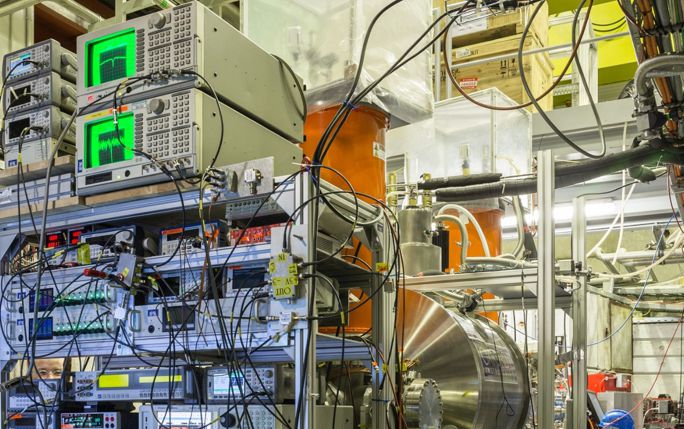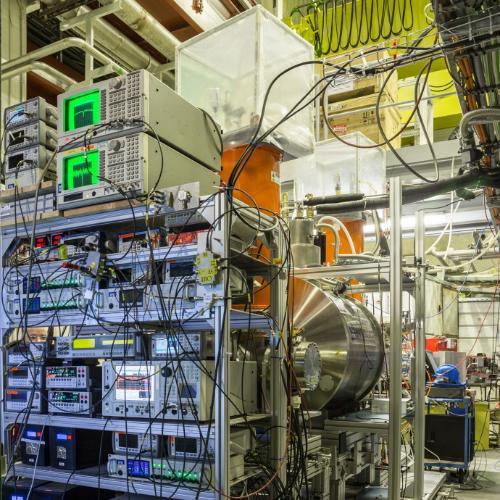Antiproton magnetic moment measured with six-fold improved precision

The BASE collaboration, led by Dr Stefan Ulmer who is part of the AVA network, just published an article in Nature Communications. The collaboration reports the most precise measurement of the antiproton magnetic moment with a fractional precision of 0.8 parts per million. The result improves upon the last measurement by the ATRAP collaboration by a factor of 6.
The Standard Model of particle physics predicts that equal amounts of matter and antimatter have been created in the big bang, and it provides no satisfying answer to explain the disappearance of antimatter in the early universe. Inspired by this asymmetry, the reported measurement tests the most fundamental discrete symmetry of the Standard Model, the combined charge-parity-time (CPT) reversal symmetry. Any measured discrepancy in antiproton and proton magnetic moments would violate the equivalence of conjugate matter/antimatter pairs and indicate new physics beyond the Standard Model.

Picture of the BASE experiment in the antiproton decelerator hall (Image: Stefan Sellner/CERN)
The BASE experiment is located at the Antiproton Decelerator (AD) of CERN. Antiprotons from the AD are injected into an advanced multi Penning trap system, where they are initially captured and cooled in a reservoir trap. A cloud of antiparticles can be stored in this trap for more than one year without annihilation loss. BASE developed methods to extract single antiprotons from this reservoir, and to provide them for single particle spectroscopic measurements, which are carried-out in the other traps of the experiment. This allows for highly economic use of the stored antiprotons: Using a single AD-shot trapped in November 2015, antiproton-experiments were conducted for in total 405 days, until December 2016. This enabled the operation of the experiment even during machine-shutdown periods.
The magnetic moment of the antiproton is determined by measuring the ratio of the spin precession frequency nL and the cyclotron frequency nc in a Penning trap. To this end a strong magnetic bottle (300000 T/m2) is imposed on the measurement trap, which allows to detect the spin state of the antiproton, since the magnetic inhomogeneity couples the magnetic moment of the particle to its axial oscillation frequency. This axial oscillation is non-destructively read-out by a sensitive superconducting image-current detector connected to one of the trap electrodes. Measurements of axial frequency fluctuations induced by resonant radio-frequency drives enable the measurement of nL and nc, and thus the determination of the magnetic moment of the trapped particle.
From six measured spin-flip resonance curves interleaved by cyclotron frequency measurements, the BASE collaboration obtained the magnetic moment of the antiproton as 2.7928465(23) mN, where mN is the nuclear magneton. This value is in agreement with BASE’s independent double-trap based proton magnetic moment measurement 2.792847350(9) mN and supports CPT invariance. Future efforts of BASE target the application of the much more challenging double trap method to measure the antiproton magnetic moment, to further increase the precision in this value down to the parts per billion level.
Christian Smorra, RIKEN